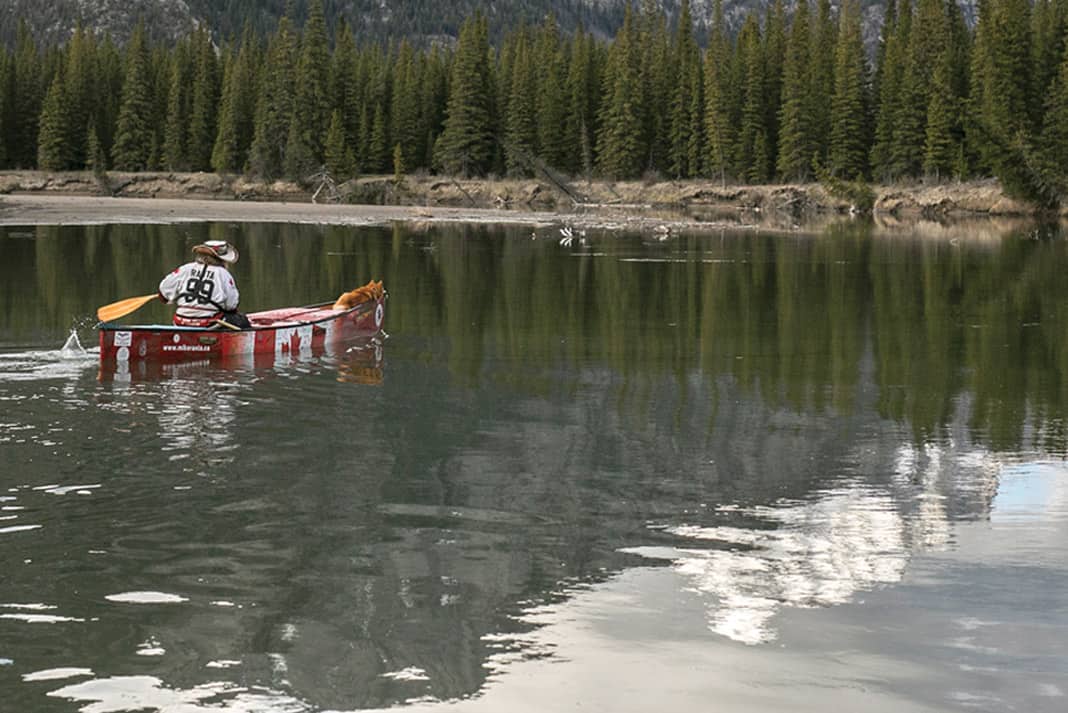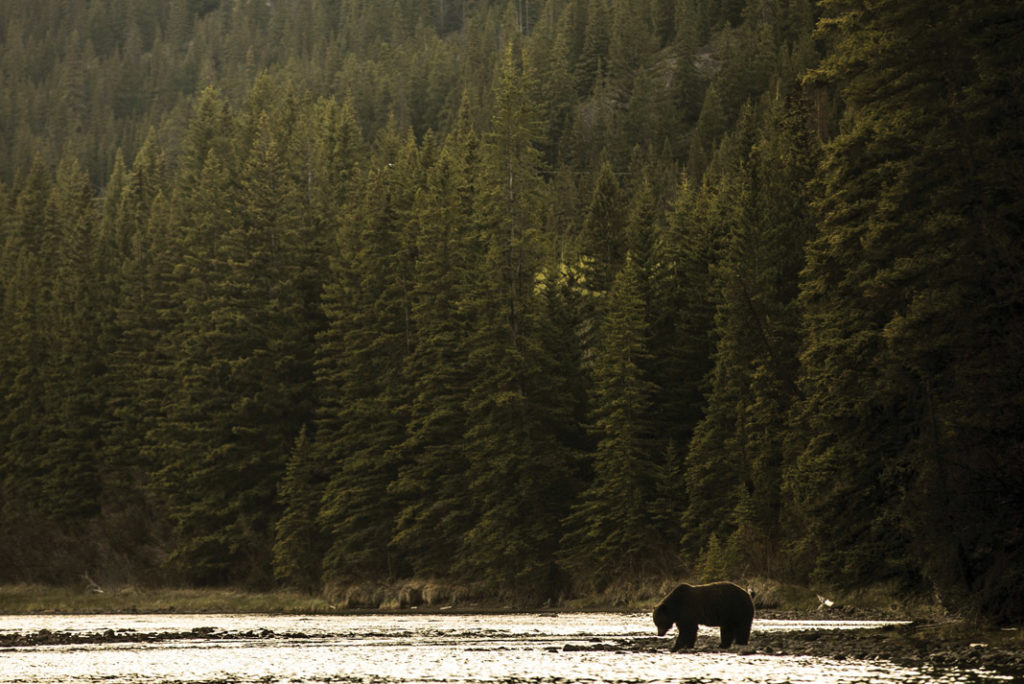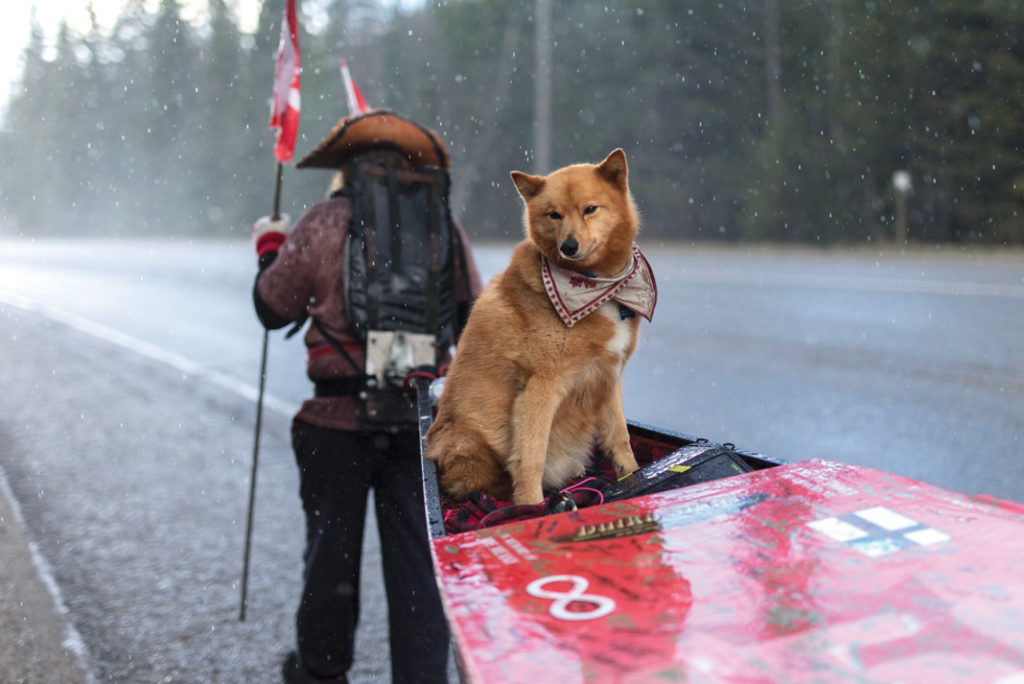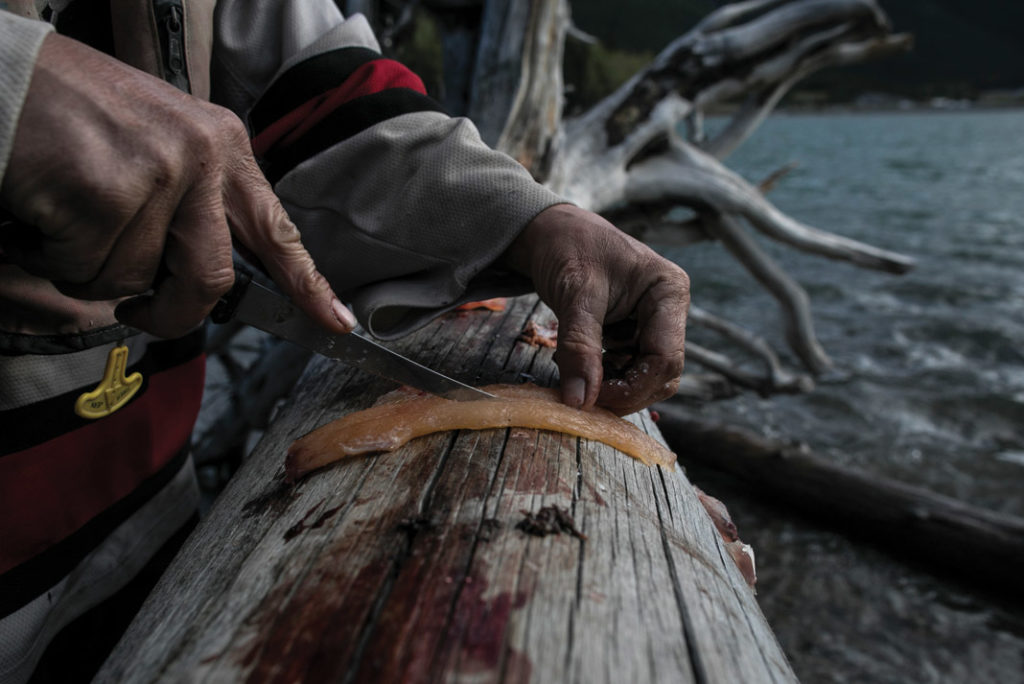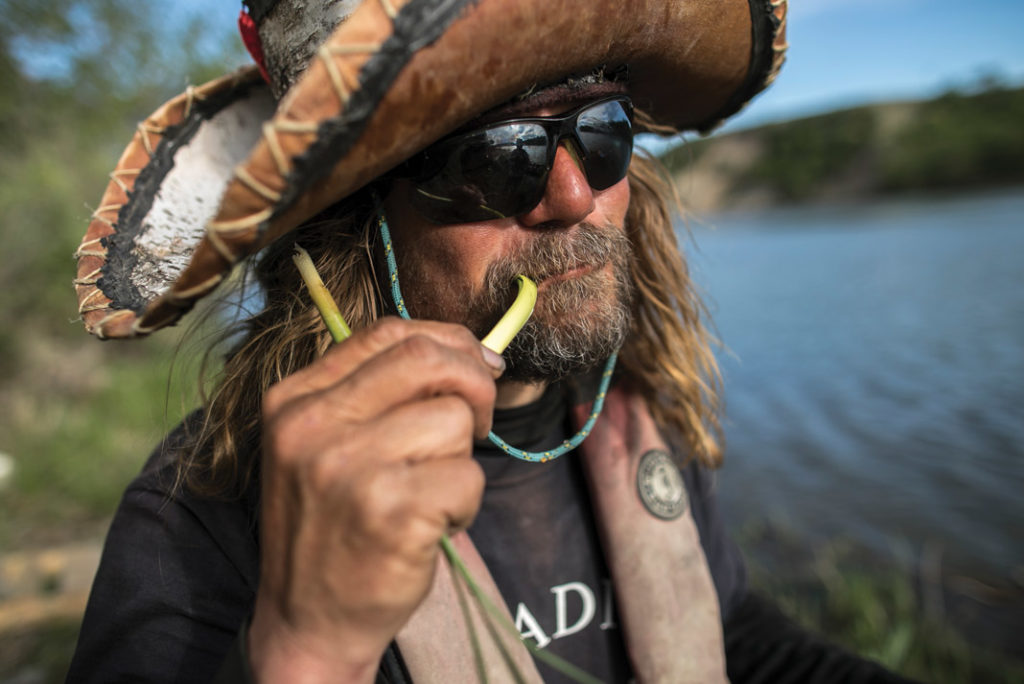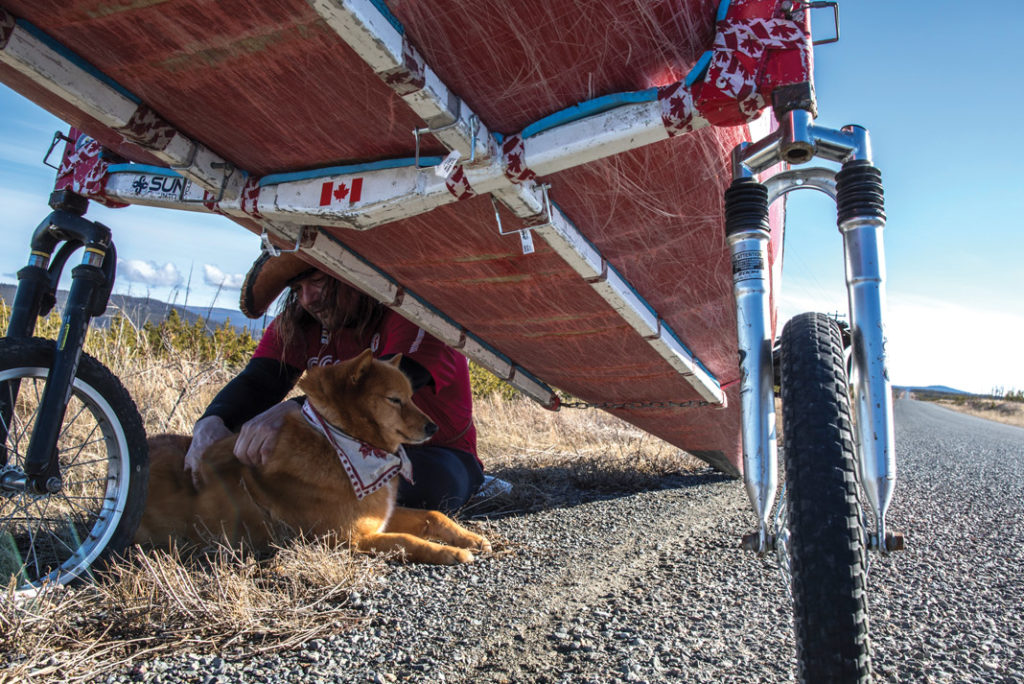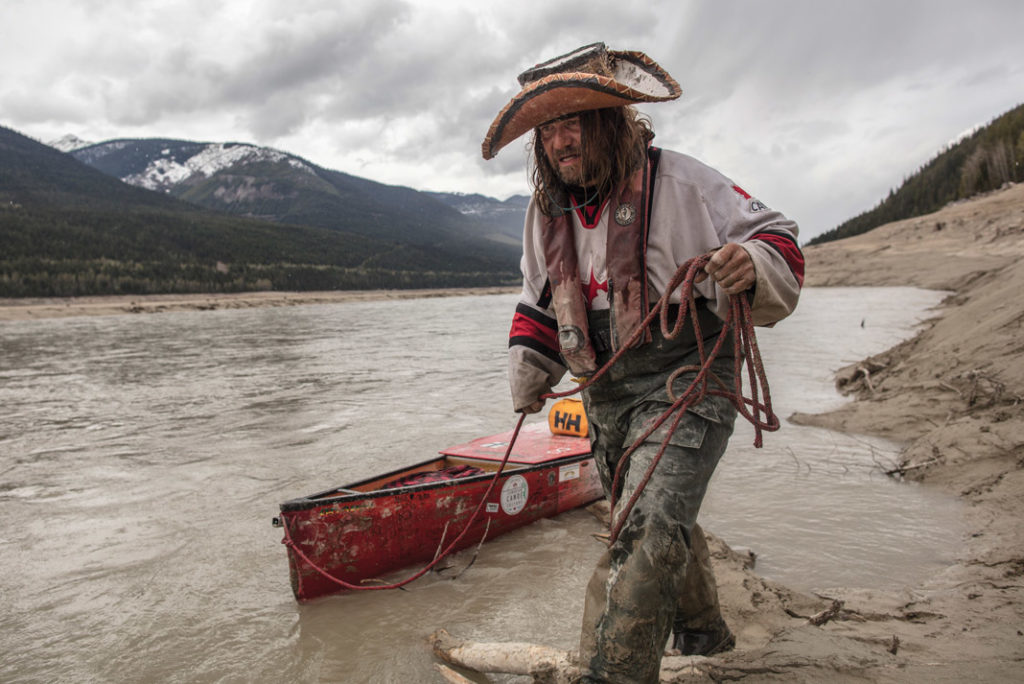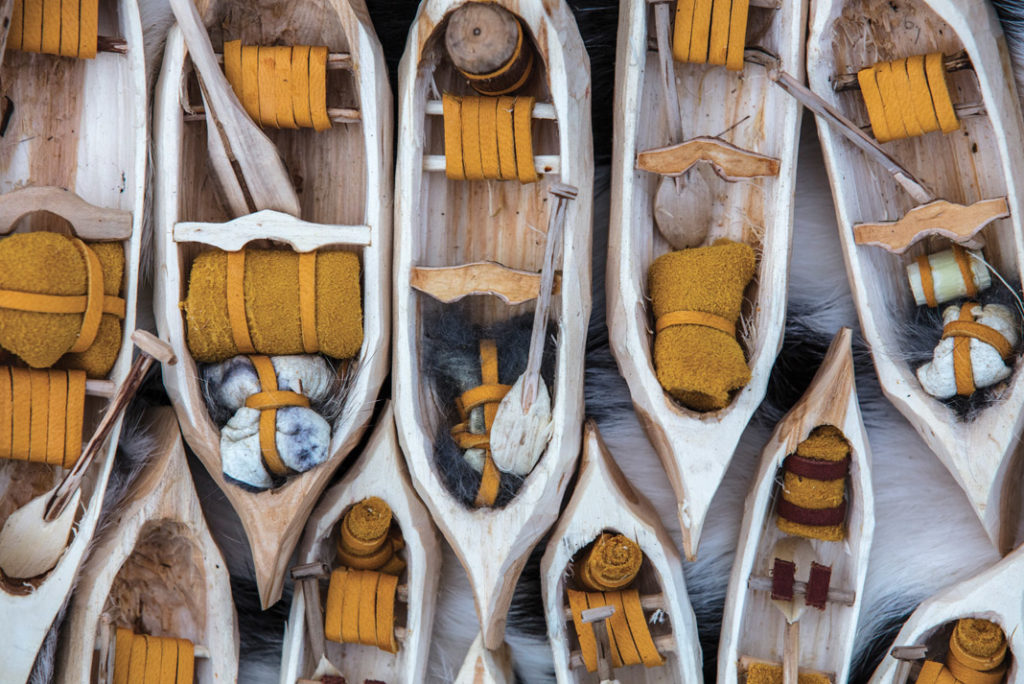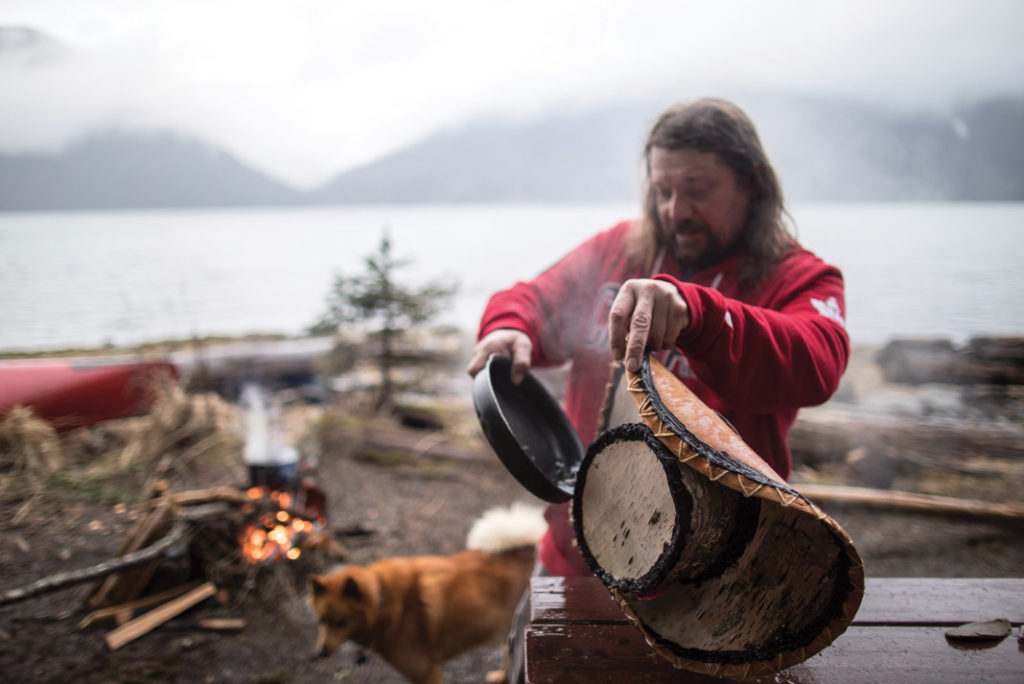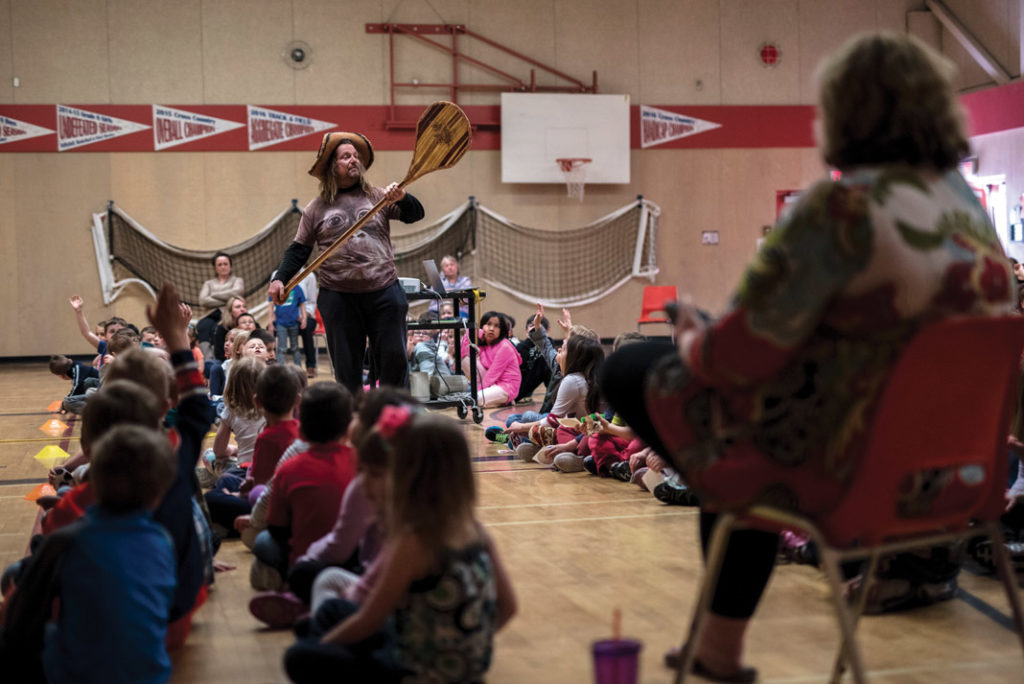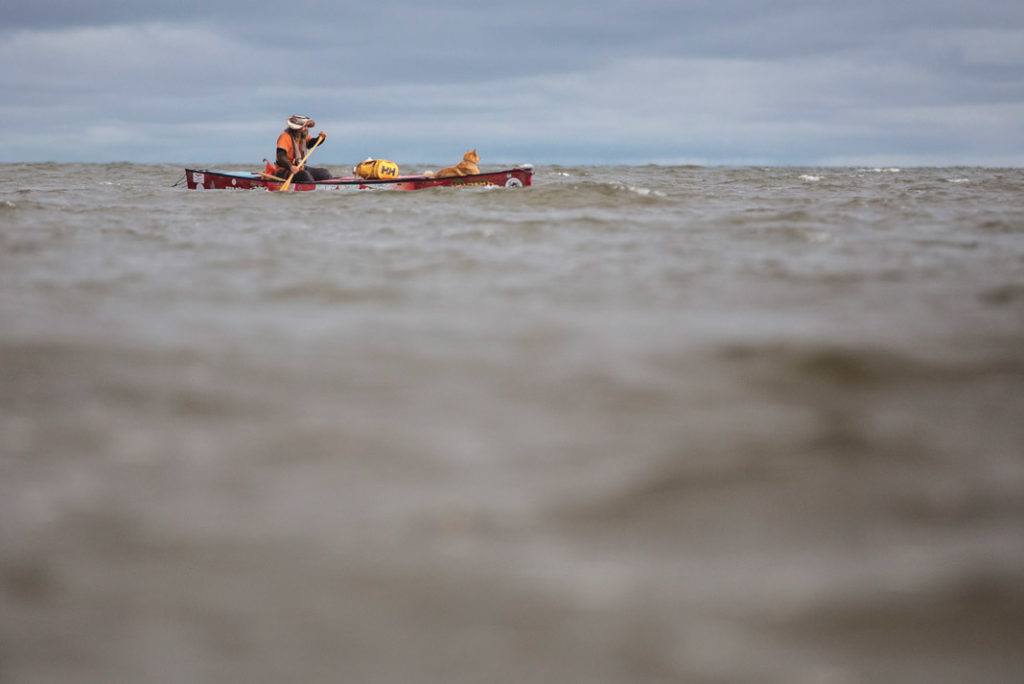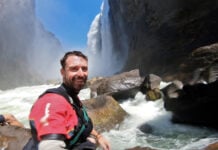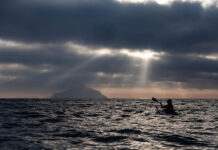On April 1st, 2017, Mike Ranta and his trusted canine companion named Spitzii, began their third coast-to-coast solo canoe trip. Paddling from the Pacific Ocean at Bella Coola, British Columbia, Ranta and Spitzii plan to travel 214 days in hopes of reaching the Atlantic Ocean at Cape Breton, Nova Scotia. The audacious canoeing expedition, featuring 1,000 kilometers of portaging over the continental divide, seems ordinary to the 45-year-old Ranta.
Meet Mike Ranta, modern-day voyageur and canoe tripper extraordinaire
Mike Ranta was born of Finnish-Metis descent and raised in the small Northwestern Ontario town of Atikokan. Growing up in the “Canoeing Capital of Canada,” just north of Quetico Provincial Park and the adjoining Boundary Waters Canoe Area, Ranta began embarking on solo canoe trips at the the age of nine.
“I’ve been a paddler my whole life in Atikokan, and explored the area ever since I can remember,” says Ranta. “Though I can’t remember the first time I was in a canoe, ‘cause I was too young, I’ve always felt comfortable in one.”
Ranta embarks on his first cross-Canada canoe trip
In 2011, after quitting his job in the oil industry and selling everything he owned, Ranta paddled 130 days from Rocky Mountain House, Alberta, to Montreal, Quebec to raise money that would help keep the Atikokan Youth Centre from closing its doors.
Ranta drew his inspiration for his voyage from four men from Atikokan: Don Meany, Geoff and William Peruniak and Norm Jewett. They paddled from Rocky Mountain House, Alberta to Montreal in 1967 as part of the Centennial Canoe Race, the world’s longest canoe race. “They are legendary paddlers in my hometown,” Ranta says, “I’m also inspired by my old boxing coach, Bobby Davidson, and of course my father.”
Prior to his departure, Mike Ranta had never paddled a big river, like the North Saskatchewan, nor had he ever experienced the wild winds and enormous bodies of prairie waters across Manitoba. “I learned a hell of a lot in those 130 days,” Remembers Ranta of the particularly stormy year. “How I walked away with my life is beyond me, but I’ve been hooked on long-distance canoe trips ever since.”
Inspired by the accomplishments of other cross-continent paddling teams, Ranta was convinced he could travel solo from coast to coast in a single season. Determined to try and having spent a few years training, on April 1st, 2014 Ranta and Spitzii departed from Vancouver. He paddled for 214 days and made it as far as Tatamagouche, Nova Scotia just 150 kilometers short of Cape Breton.
Once more into his trusty canoe
With two big canoe trips under his belt and a false sense of accomplishment gnawing at his mind, Mike Ranta studied the map and found what he believed to be a faster voyageur route through the prairies via the Qu’Appelle River. Effectively bypassing all the Manitoba lakes and their heinous winds, the route was Ranta’s chance to shave time off his previous trips and reach his desired goal.
On April 1st, 2016, Ranta and Spitzii once again departed from Vancouver. Along the journey Ranta invited veterans to meet him and sign his Souris canoe. Ranta and Spitzii experienced the country’s geographic diversity as they travelled up the Fraser River, through the Kootenay Mountains, the prairies, past his hometown of Atikokan in northern Ontario, along Lake Superior and finally out to the east coast. After only 200 days they successfully made it to Dominion Beach, Cape Breton, completing what many considered impossible.
Third time’s a charm for Mike Ranta and Spitzii
With 2017 marking Canada’s sesquicentennial anniversary, Ranta decided to celebrate.
“I couldn’t think of a more Canadian way to say happy birthday than to paddle across the country one more time.”
Inspired by Alexander Mackenzie’s historic discovery of the overland route to the Pacific Ocean, Ranta decided he would this time embark from the isolated coastal community some 600 kilometers northwest of Vancouver.
Mike Ranta’s 18-foot Souris River Canoes Wilderness 18 is currently enjoying its second cross-country canoe trip. It’s made of Kevlar and carbon fiber and is outfitted with custom-built plywood decks. Having successfully traversed Canada in 2016, Ranta figured his canoe—patches and all—would easily survive the rigors of another 8,000-kilometer trip across this vast nation.
“I spend almost two-thirds of each year in my canoe,” explains Ranta. “I cook on the water. I drink my coffee on the water. Sometimes I’ll spend over twenty-four hours in my canoe without getting out.”
Spitzii keeps the local wildlife in check
When curious onlookers engage the boisterous Ranta about his nine-year-old pure-bred Finnish spitz, aptly named Spitzii, the modern voyageur always answers, “He’s my chief navigator, my head bear scarer, and he’s my best friend.”
Spitz carry a heavy reputation as a solace, loyal breed with exceptional abilities in the wilderness. If keeping bears at bay around camp isn’t enough, Spitzii adds the necessary companionship that keeps Ranta going through the darkest days. “He’s got a real sense of humor,” laughs Ranta of his his furry friend who has accompanied him on all his major trips.
In 2016, Ranta swamped his canoe in the swollen Kaministiquia River. Once on shore Ranta immediately noticed signs of a wolf pack. “He was gone for 24 hours. I swear all of Thunder Bay came to the bush and helped look,” recalls Ranta. “The thought of hurting Spitzii is what keeps me safe out here. I don’t know what I would do if I lost him.”
Ranta relies on his bushcraft for dinner—or not
“The big thing on this trip is just getting lots of calories,” explains Ranta of his eating habits. “I try to eat right from the land, but these trips don’t allow time for that.”
Despite his relentless forward progression, Ranta is a master of wild edibles. He’s a keen fisherman and a college-certified chef, which all combine for many interesting meals. A typical day will see a morning of three or four instant oatmeal pouches, Nature Valley bars coated in crunchy peanut butter through the day, a lunch of fried walleye with a can of beans, and then a dinner of Ranta’s trademark, Mukmuk.
To make Mukmuk, fry a half-pound of bacon, onions and mushrooms, add water and Kraft Deluxe Velveeta on Shells, boil, simmer, add cheese, fried fish and finally a can of mushroom soup. The dish is rich in calories, full of energy, relatively fast to construct and keeps Spitzii on his toes in case bears come looking for a plate.
Ranta’s nose is often turned up in search of a nearby Tim Hortons. While most of his time is spent in the wilderness, Ranta resupplies at grocery stores when he paddles through towns. Sometimes it might only be days between a store, other times it’s weeks.
“I like to live from the land, but I love a Tim Hortons,” says Ranta through a smile. “And if the voyageurs had known about McDoubles, I think they would have loved them too.”
Over the mountains with a canoe cart
Knowing what he calls a “true” canoe trip would require him to travel with his canoe across the country by foot and paddle, Mike Ranta was inspired to design his first aluminum portage cart. He modelled his cart after the traditional Métis Red River carts used throughout most of the 19th century in the fur trade to bypass rapids and connect the prairies prior to the railway.
“My 2014 trip was a disaster. I had a horrible time pulling my canoe on the mountains that year,” recalls Ranta of his first coast-to-coast trip. By 2016, Ranta designed a high performing, rugged canoe cart that was light enough to be paddled across the country.
Last year he traded out rigid bike forks for a set of 16-inch tires and better sets of kids’ suspension forks. Ranta’s cart frame has now survived its second trip through the mountains of British Columbia, where the bulk of portaging is done.
Ranta came to realize however, there was a minor bend in his frame, thus creating a problem. Along the 1,000 kilometers of this portage, he figures he went through 16 inner tubes and at least eight tires. By the halfway point of their 2017 canoe trip, Mike Ranta and Spitzii had spent nearly one-third of their time, roughly 35 days, weather bound in heavy storms.
“It isn’t the storms or the good times that make people quit, it’s here in camp waiting where people get tired of big trips,” admits Ranta.
Craft work helps to pass the time
To combat the time spent patiently waiting for a change in weather, Ranta uses his small pocketknife to pass the time and whittle thank you gifts for those who have helped him along the way. During one particular six-day storm on Cedar Lake in Manitoba, Ranta whittled fourteen miniature canoes in the span of one tent-bound day.
Where most might stop at the whittling, Ranta emerges from his canoe with a small Tupperware container filled to the brim with fur, leathers, scissors, glue, carious and other miscellaneous crafting items to finish his tiny creations with seats, thwarts and little voyageur bundles.
If the red canoe complete with Spitzii barking from the bow isn’t a lasting enough image of Mike Ranta, his birchbark hat should do it. “I learned about building with trees, bark and the land when I was a young fella,” says Ranta as he inspects the seams of his gnarly hat. “I started making miniature birchbark canoes for friends and family. I loved the process until one day I had the idea to make a hat.”
While Ranta admits there was no real inspiration for his hat, he says it’s become an iconic part of his life. Each hat is not an easy undertaking and each one is unique. “I make a new hat for each trip. It takes me about three days to harvest and create it,” explains Ranta.
Just like a traditional birchbark canoe, Ranta uses spruce root to lash the seams and three pieces of birchbark to put the hat together. Rather than keep pine pitch and bear fat on hand, Ranta uses a mixture of ash and silicone to seal the seams.
Mike Ranta’s third canoe trip is all about saying thanks
On previous trips, Mike Ranta worked tirelessly to accomplish his goal of reaching Cape Breton, often missing the opportunity to speak with various communities and schools along the way. Having grown up in Northwestern Ontario, Ranta understands the impact an inspirational speaker can have on the youth of a small town.
This time he wants the canoe trip to be about interacting with as many people as possible. “Some kids might blow right past my message, but they never make it past Spitzii. Kids love him and he’s great with them.”
Reading through the thousands of signatures cluttering his canoe, Mike Ranta declared: “My last trips were about making it from coast to coast as fast as possible. This trip is about thanking all the great people I meet along the way.”
The self-proclaimed “modern voyageur” has been shaking hands with every person he’s met since departing Bella Coola, just before getting them to sign his canoe. There are signatures from Sweden, Germany, Britain, Poland, Austria and Argentina, and of course the United States. Ranta even attempted to portage right across Parliament Hill in Ottawa, drawing quite a crowd before being turned away by security. He was later invited back to participate in the parliamentary Remembrance Day ceremonies.
“I get a great energy from these people. When times are tough, I look down and know that they’ve all got my back. That really helps keep a fella going out here. We have such a beautiful country and we should all be so grateful. My goal is to spread the love and compassion that we’re known for as Canadians.”
This article was first published in Issue 51 of Paddling Magazine. Subscribe to Paddling Magazine’s print and digital editions, or browse the archives.
David Jackson is an assignment photographer traveling with Mike Ranta and Spitzii documenting their journey. Jackson filed this story while held up by weather in the Fisher River Cree Nation, Fisher Bay, Lake Winnipeg. Follow along at davidjacksonphoto.com.



